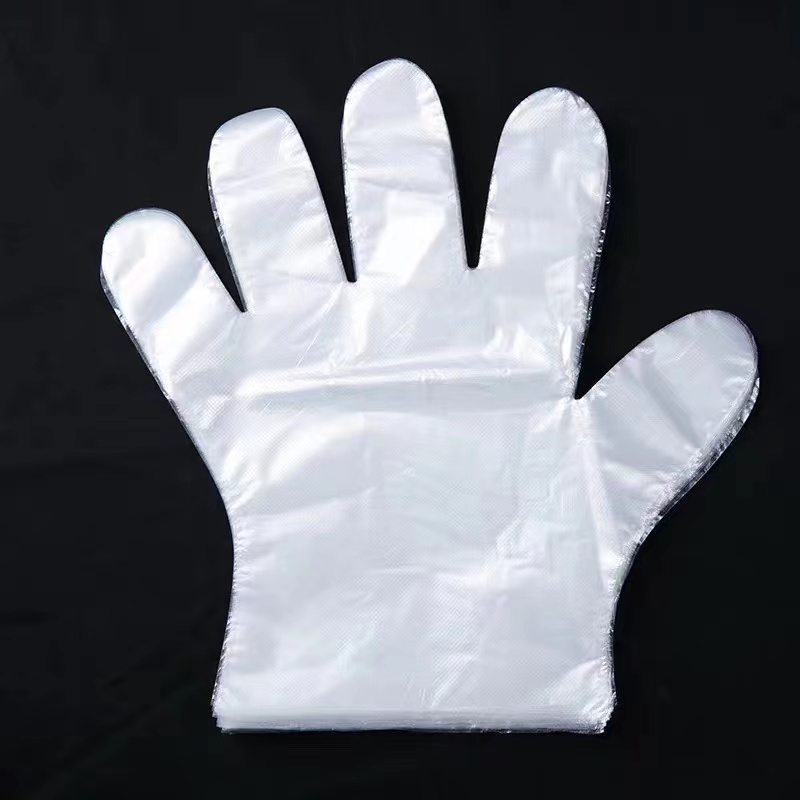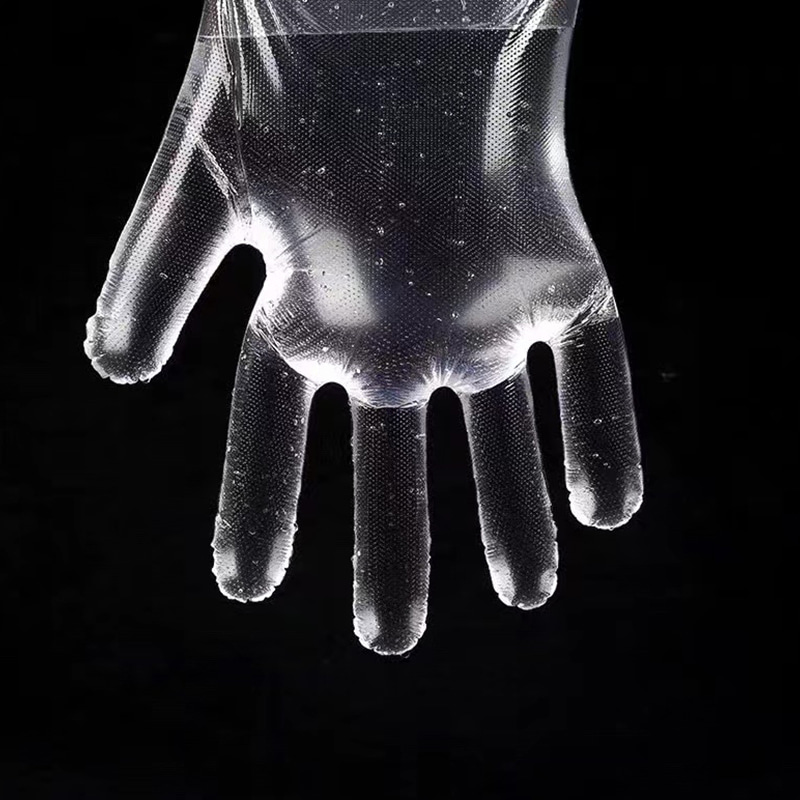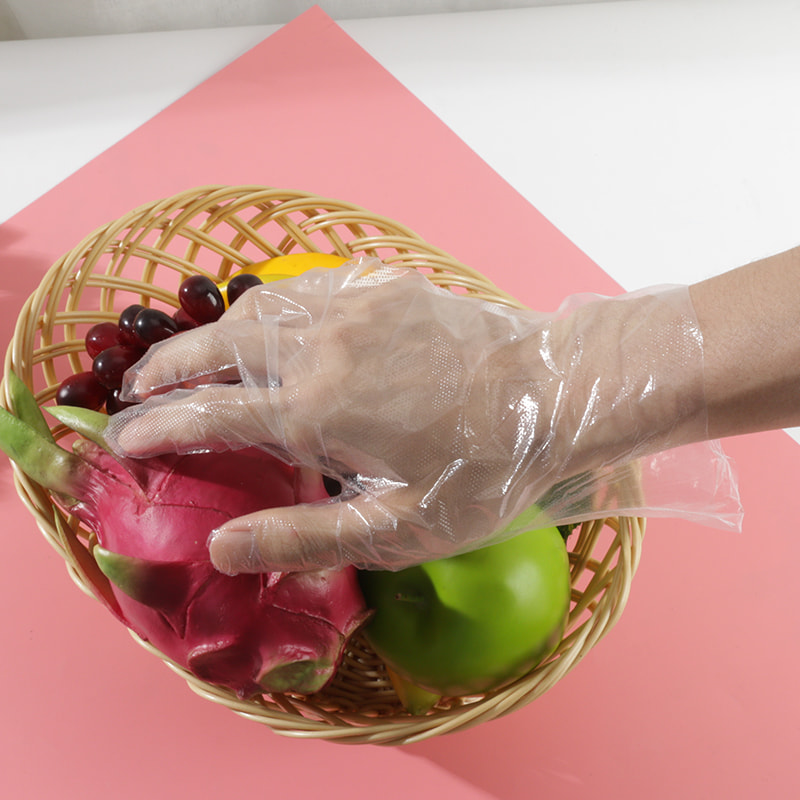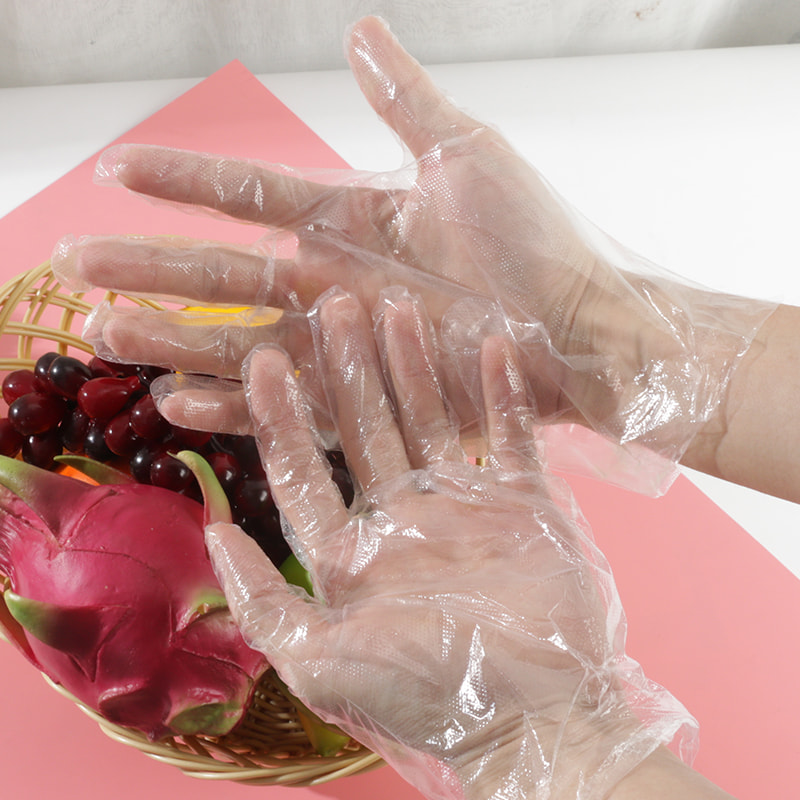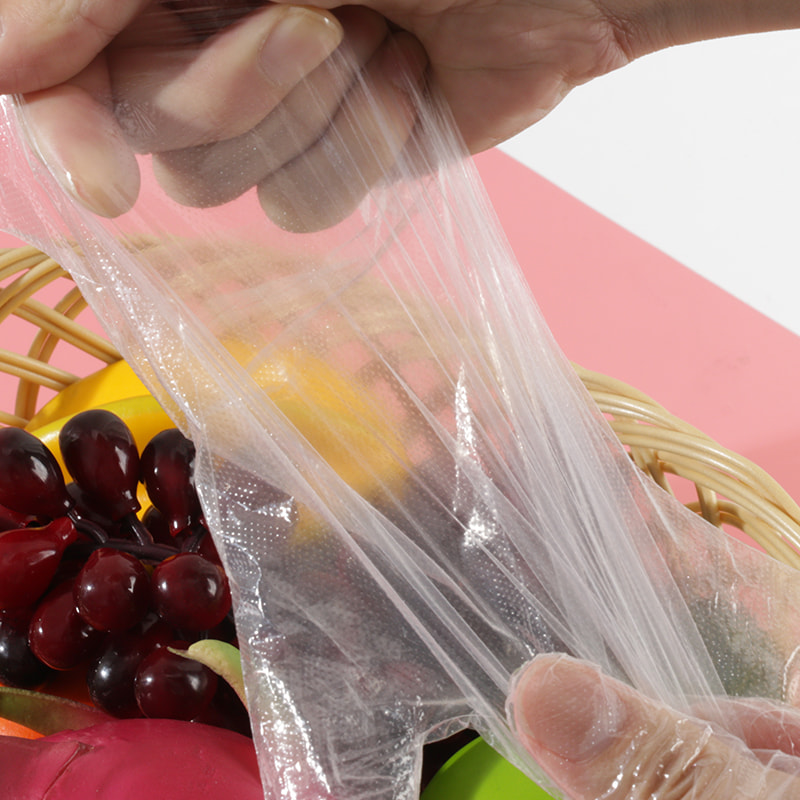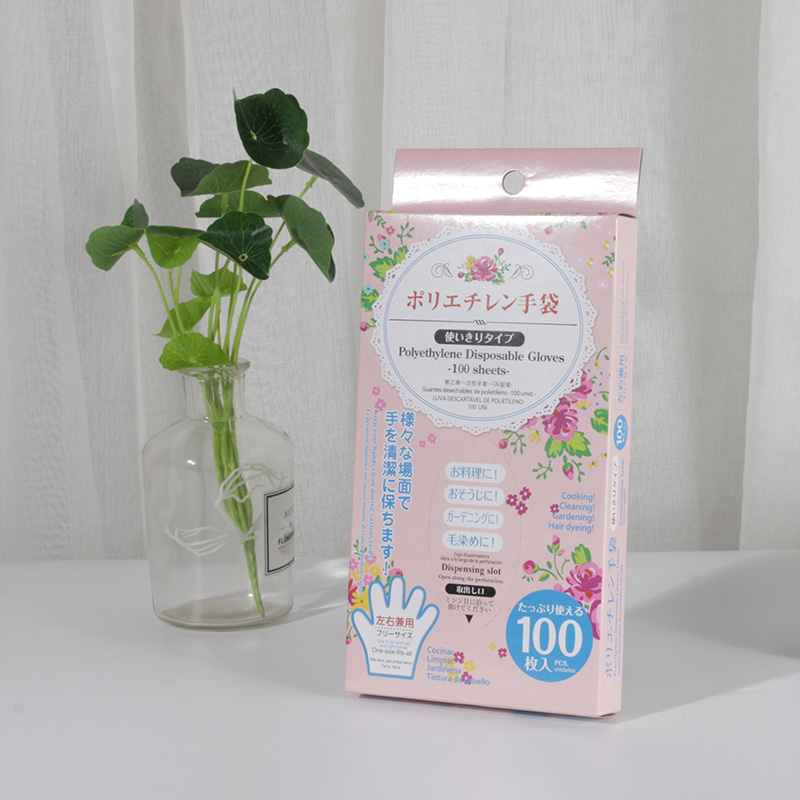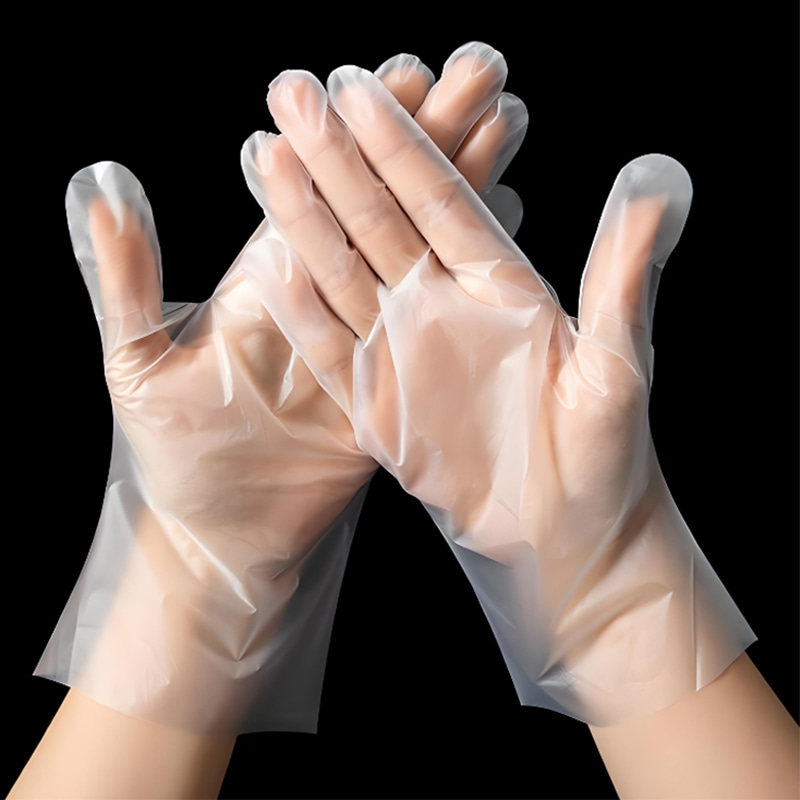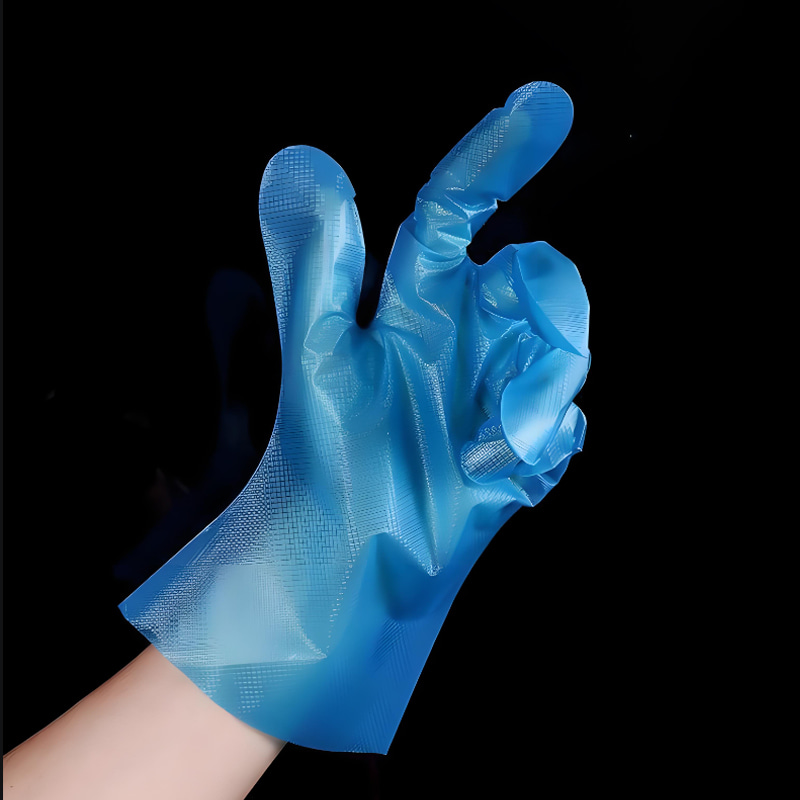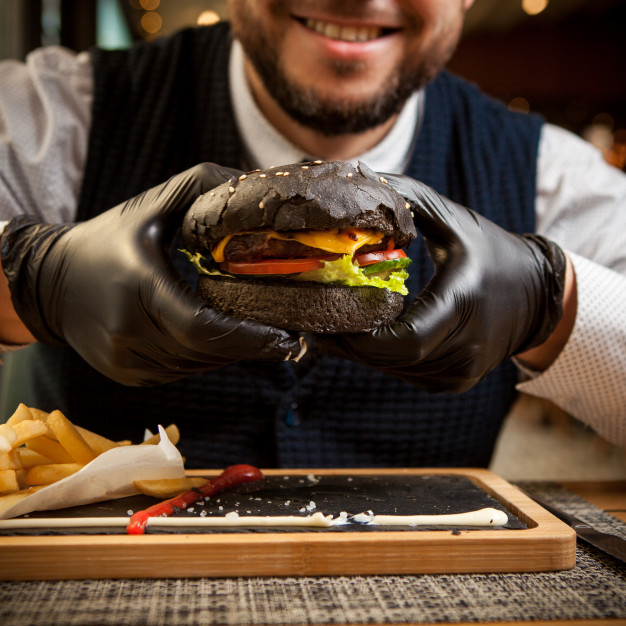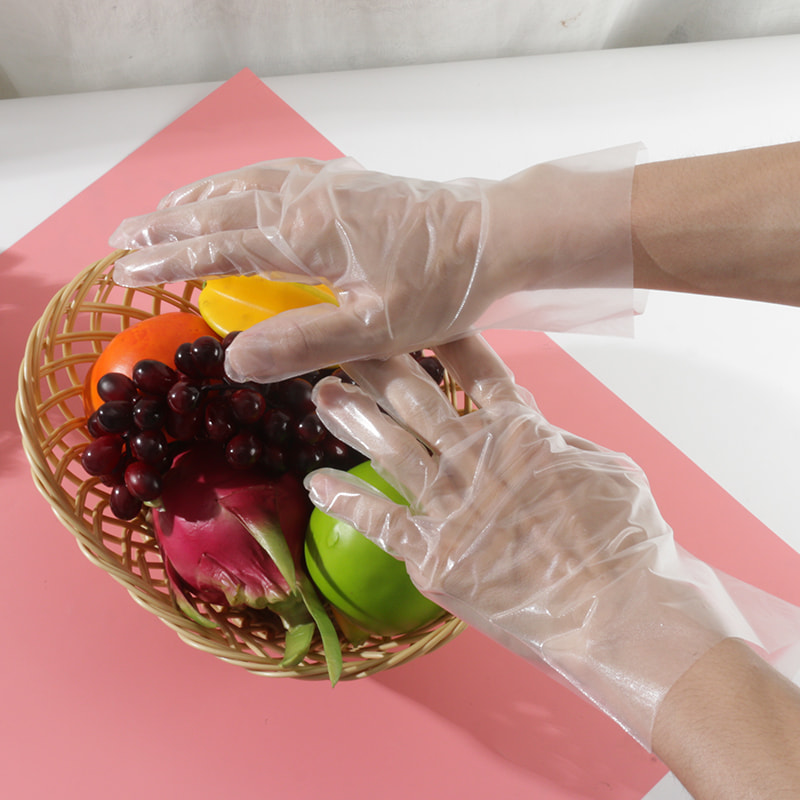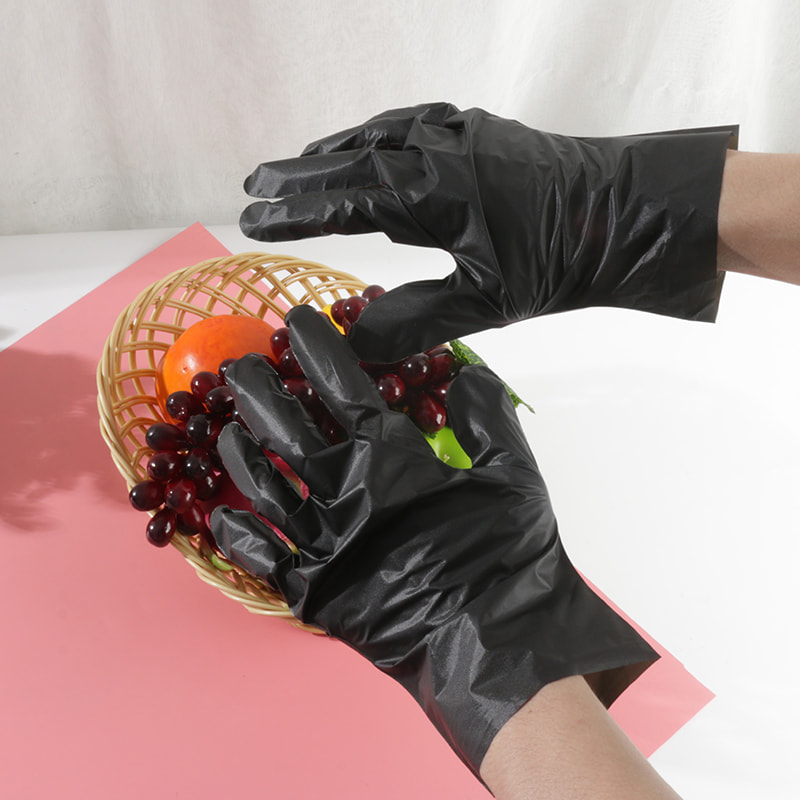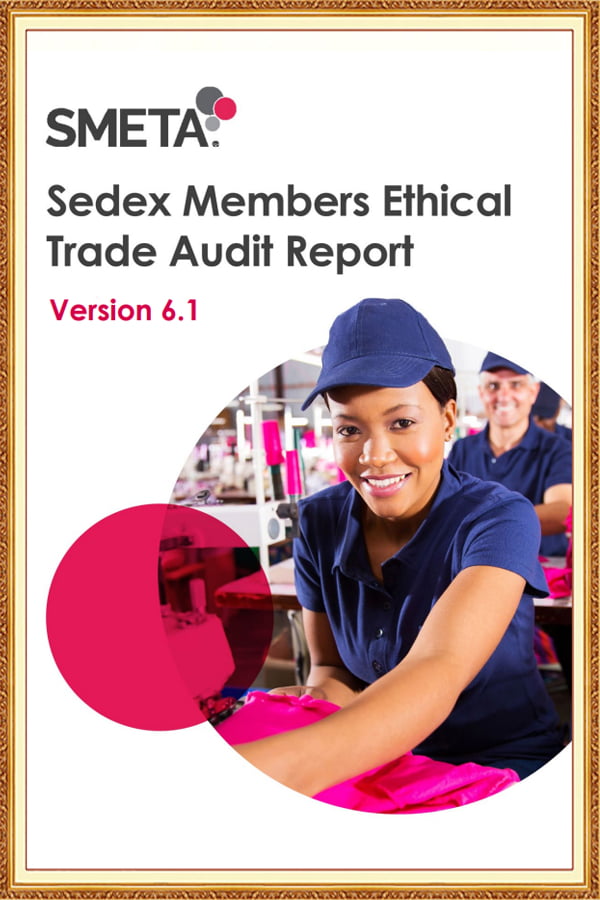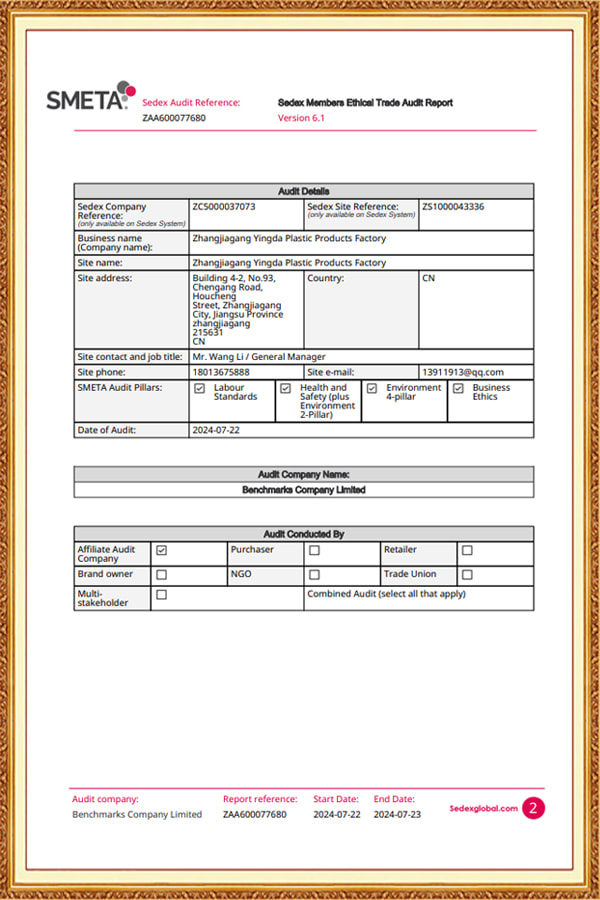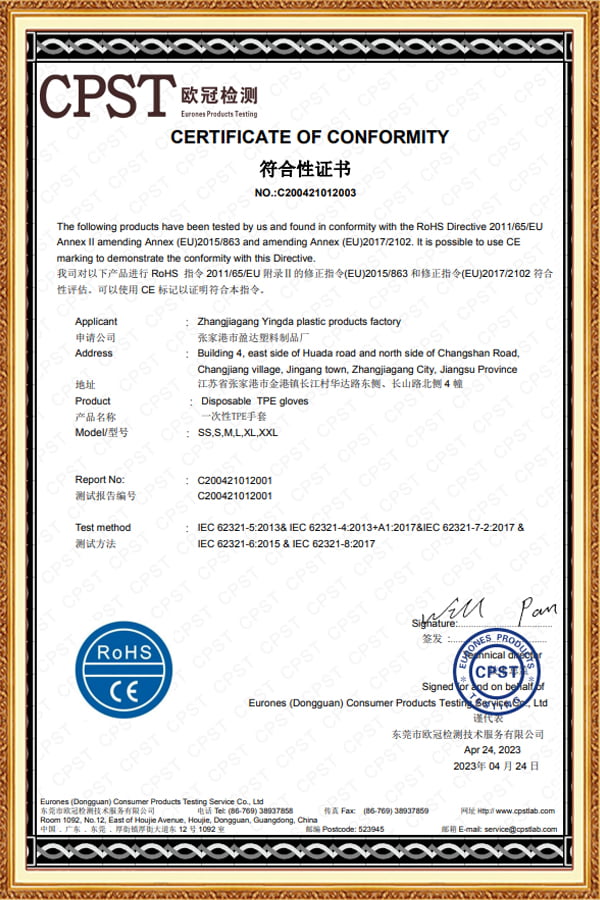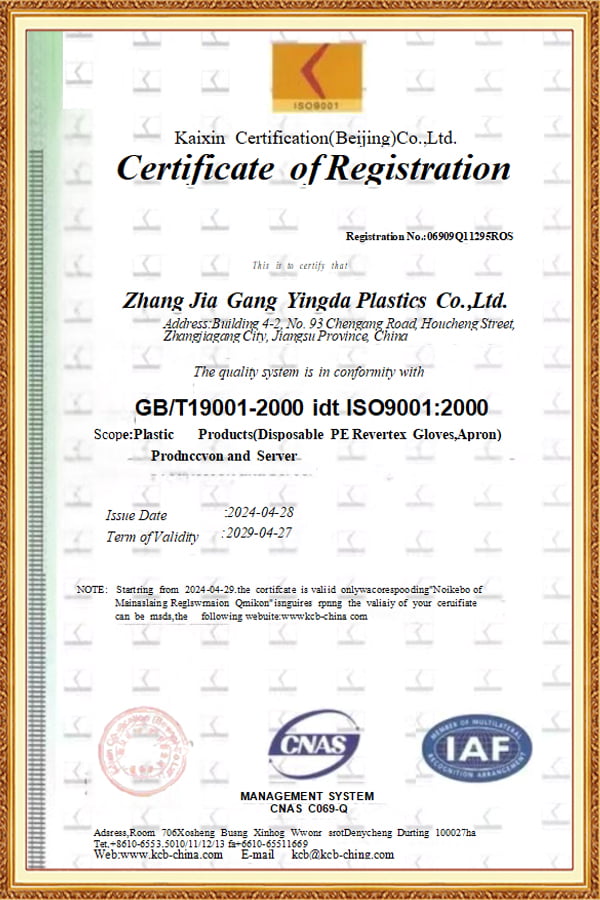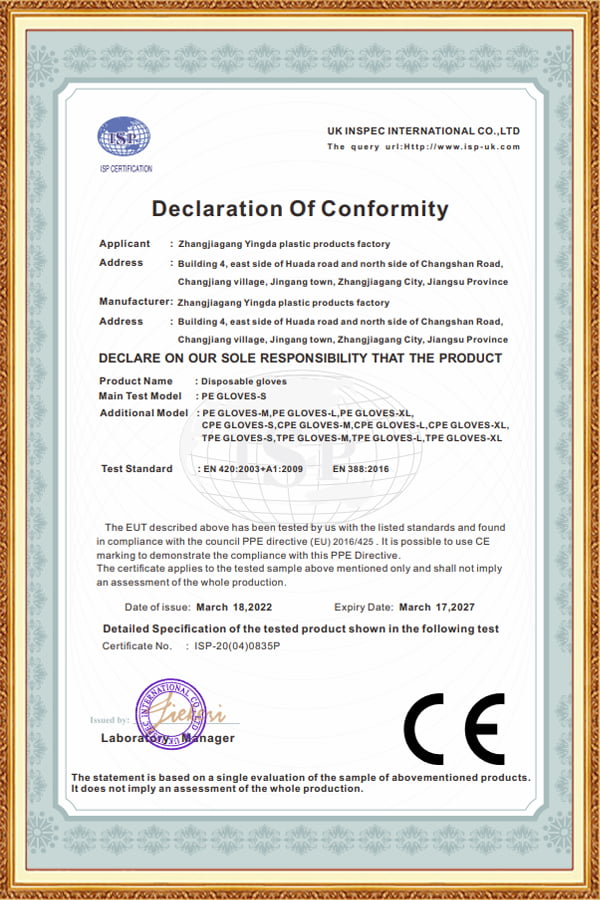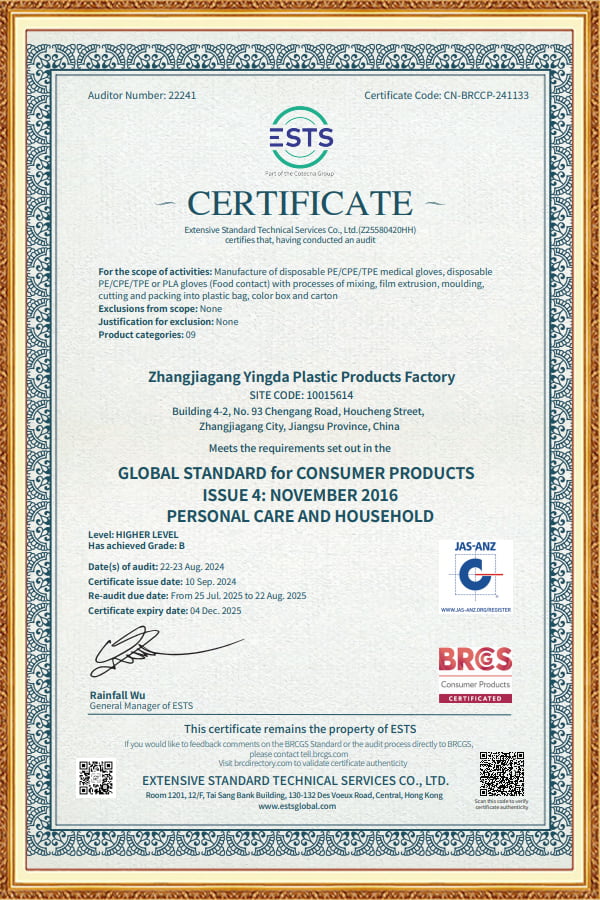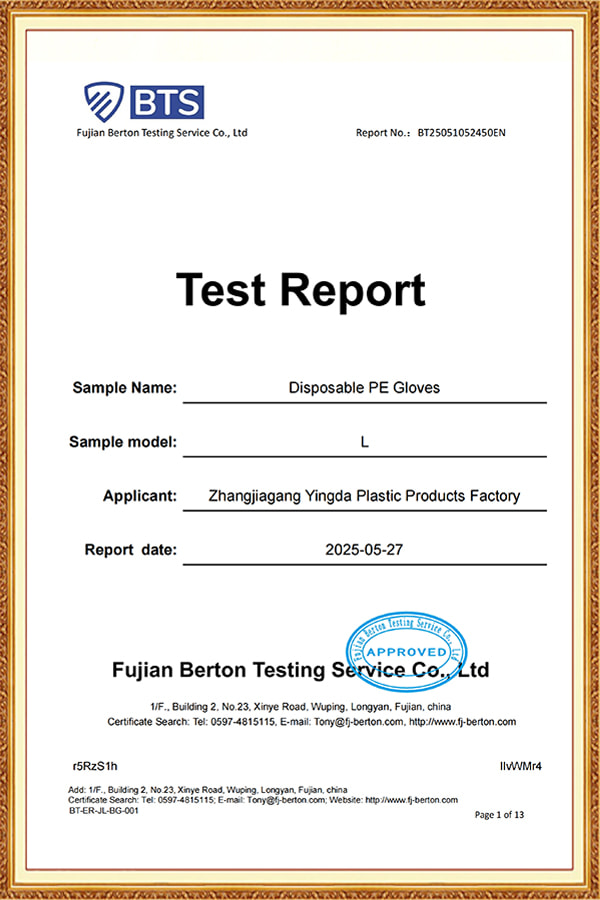S,M,L,XL Environmentally friendly and soft. This white TPE glove (frosted pattern) is a high-perform...
See Details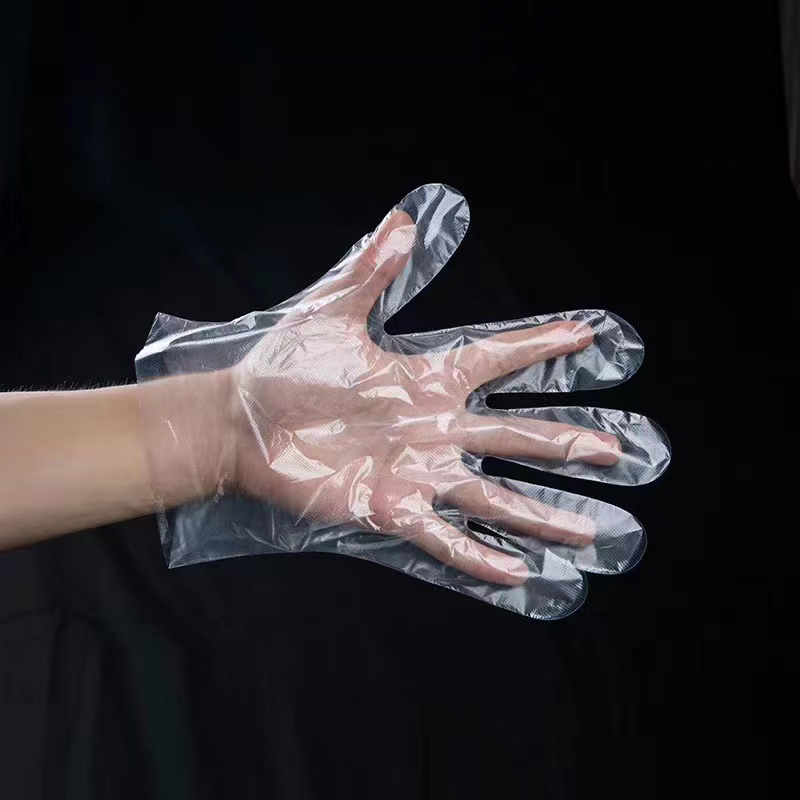
Waterproof and oil-proof Off-white LDPE gloves
Waterproof and oil-proof This white LDPE glove is a disposable glove made of low-density polyethylene (LDPE) material with excellent water-proof and oil-proof properties. The gloves are designed in natural white with a simple and clean appearance, suitable for all kinds of work environments that require high hygiene standards. The LDPE material makes the gloves light and soft, and has good puncture resistance and tear resistance, which can effectively prevent liquid penetration and contamination. The surface of the gloves is smooth and has no texture, so the hand is more flexible when using it, and various operations can be completed quickly.
- Product Features
- Application Scenario
- Production Process
-
1. Application scenarios
Catering Industry
● PE gloves are widely used in the catering industry because of their low price and easy availability. They are suitable for handling foods with low oil content, such as fruits and vegetables.However, PE gloves are not suitable for long-term contact with high-fat foods or doing housework.
● Family lifePE gloves are widely used in daily life at home because of their lightness and easy to carry. For example, handling food, cleaning housework, etc.
● Industrial and Manufacturing: In industry and manufacturing, PE gloves are often used to handle chemicals, perform simple assembly work, etc. Their low cost and easy shaping properties make them have a high market share in these fields.
● Agriculture: In the agricultural field, PE gloves are used for handling soil, planting crops, etc., and are popular because of their durability and low cost.
● Medical Industry: Although PE gloves are not as widely used in the medical field as TPE gloves, they are still used for some basic medical operations, especially when handling non-corrosive drugs.
-
Product features and advantages:
● Waterproof, oil-proof, bacteria-proof, acid-resistant and alkali-resistant PE gloves have these basic characteristics and can effectively protect users from oil and chemical substances.
● Low cost The raw materials of PE gloves are mainly low-density polyethylene (LDPE) and linear low-density polyethylene (LLDPE). These materials have low costs, which makes PE gloves have obvious advantages in price.
● Easy to shape: PE gloves are easy to process and shape, suitable for large-scale production and application.
● Wide range of application scenarios: PE gloves are widely used in catering, medical, industrial and other fields. For example, in the catering industry, PE gloves still occupy 65% of the market share due to their low cost and good protective performance.
-
1. Core production process
Raw material ratio and pretreatment
PE gloves are mainly made of LDPE (low-density polyethylene), HDPE (high-density polyethylene) or LLDPE (linear low-density polyethylene) raw materials, which are mixed with additives (such as plasticizers and anti-sticking agents) to form a homogeneous material. Some processes introduce composite modification technology to improve barrier properties (such as oil resistance and chemical resistance).
Blown Film
After the mixed raw materials are melted at high temperature in a blow molding machine, they are extruded through a ring die to form a tubular PE film. The film thickness is controlled by air pressure and traction speed, and the thickness accuracy can reach ±0.01mm^[2][8]. The film blowing technology directly determines the uniformity and mechanical properties of the gloves.
Mold hot pressing
The PE film is hot-pressed using a reciprocating finger mold, the mold temperature is controlled at 120-150°C, the pressure is about 0.5MPa, and the molding time is 0.5-1 second, achieving rapid separation of disposable gloves. The automated mold system can achieve a pressing efficiency of 200-300 gloves per minute.
Separation and packaging
The formed gloves are automatically separated from the waste by pneumatic grippers, and defective products are removed by the visual inspection system. Before packing qualified products, triple packaging (plastic film + box + outer box) is performed to ensure hygiene and safety.
● Anti-slip structure design: Adding pitting or texture to the surface of the mold can increase the friction coefficient of the gloves and improve the anti-slip performance by more than 40% (laboratory test data).
● Process energy saving optimization: Using low-temperature film blowing technology (melting temperature reduced by 15°C), energy consumption is reduced by 20% while avoiding material degradation.
● Waste recycling system: The proportion of scraps after crushing is up to 30%, reducing the cost of raw materials by 10%-15%.Physical properties : Tensile strength ≥8MPa, elongation at break ≥300% (GB/T 1040.3 standard);
● Chemical protection: Passed the 24-hour 10% salt water immersion test, water permeability <2.1g/m²·24h;
● Hygiene control: The production environment complies with ISO 14644-1 Class 8 cleanliness requirements, and the finished products are sterilized with ethylene oxide.
● Low-cost scenario: The cost of a single PE glove is about 0.02 yuan, which is suitable for light-load scenarios such as catering sorting and short-term cleaning;
● limitation: The upper temperature limit is 60℃. It is easy to be damaged when it comes into contact with organic solvents or sharp objects. It is not suitable for areas with high protection requirements such as medical surgery.

Associated Company: Zhangjiagang Meilida Medical Products Co., Ltd
-
Introduction In the evolving landscape of hygiene protection, disposable CPE gloves have become a crucial part of industries requiring high standards of cleanliness, safety, and co...
READ MORE -
Introduction Disposable PE aprons have become indispensable in numerous professional settings due to their versatility, hygiene, and cost efficiency. These single-use protective ga...
READ MORE -
Introduction to Disposable TPE Gloves Disposable TPE gloves are a modern alternative to traditional disposable hand protection made from materials like latex or vinyl. TPE stands f...
READ MORE -
As environmental awareness continues to grow, the question of how to reduce dependence on plastic wrap has become a central concern in both industrial and household packaging secto...
READ MORE



 English
English  Français
Français  Deutsch
Deutsch 